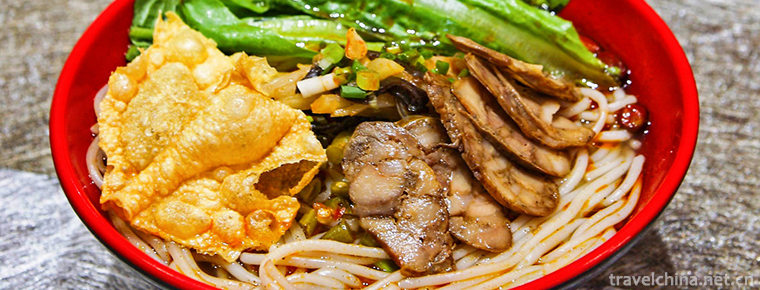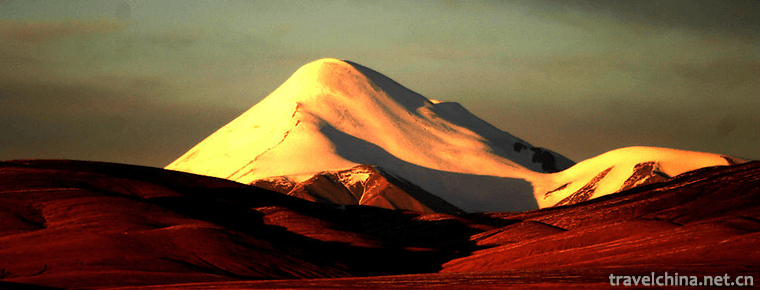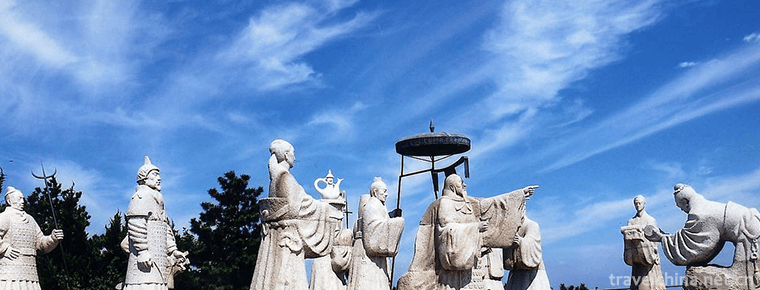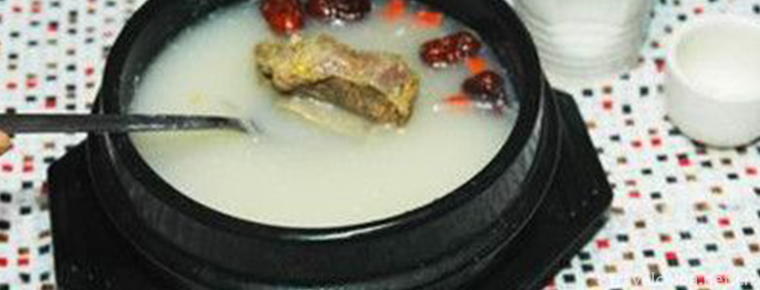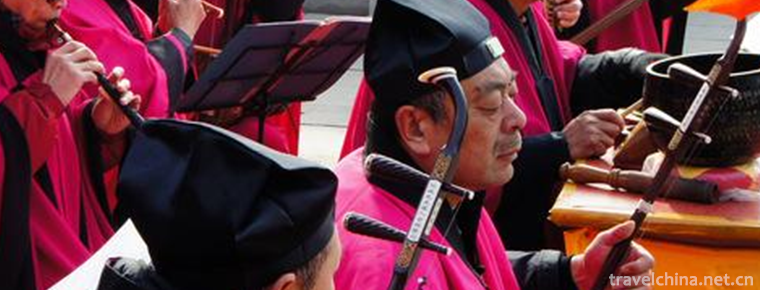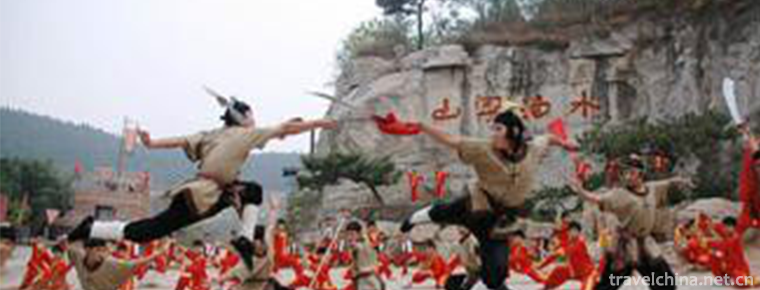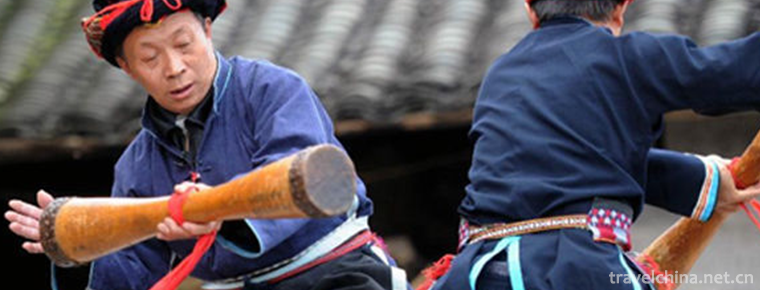Jingshan Park
Jingshan Park is located in Jingshanqian Street, Xicheng District, Beijing, on the central axis of the Ming and Qing Dynasties, west of Beihai, south of the Forbidden City Shenwumen across the street, is the imperial court of the Ming and Qing Dynasties. The Jingshan Hill in the center of the park is made up of earth and has been the commanding height of the whole city.
Jingshan Hill Park was built in 1928. The total area of the park is 23 hectares, of which the flower lawn covers 1100 square meters. The park is a national AAAA-class tourist attraction, the park has a lookout tower, five-square pavilion, Shouhuang Hall, Yongsi Hall, Peony Garden and other attractions. The park will stop selling tickets after September 28, 2018 when the park is full.
In ancient times, Jingshan Hill and Beihai were all old roads of Yongding river. The Jingshan Hill now has a high elevation and gradually becomes a hillock after the Yongding river is diverted. Liao Yu built the palace of the Yao Island (today's Beihai Park Qiong Hua Island), the remaining soil here. In the nineteenth year of Dading in the Jin Dynasty, Jin Zhangzong built Taining Palace on the south side of the area, dug Xihuatan (now Beihai), piled up hills and built Royal gardens, called "Beiyuan". Its hills are surrounded by two walls, and the building of Yao Guang Lou on the mountain is called one of the twelve scenes of Jin Zhong Du.
In the middle of the 13th
century, Kublai Khan, the ancestor of the Yuan Dynasty, built the metropolis in
the fourth year of the Yuan Dynasty (1267). Tuqiu area was located in the
center of the metropolis, and the core building of the palace, Yanchun
Pavilion, north of it, was set up as a "backyard" for the emperor to
visit. There are 80 thousand square meters in the court. The yuan emperors once
worked here to show the world. The original golden hill is called "Castle
Peak" as the name of the mounds. There are also claims that the Yuan
Dynasty is also known as "Zhen Shan".
In the early years of Hongwu in the Ming Dynasty (1368), Lang Zhongxiao Xun of the Ministry of Works participated in the demolition of the Palace Museum of the Yuan Dynasty, visiting the scenery of the Houyuan and the buildings of the Golden Hall, the Cui Hall, the Flower Pavilion and the felt pavilion. During the Yongle years, Ming Dynasty founder Yongle built large cities, palaces and gardens in Beijing. According to the theory of "Canglong, White Tiger, Suzaku, Basalt, the Four Spirits of Heaven, and the Four Squares of Heaven", the north of the Forbidden City is the place of Basalt, which should be a mountain. Therefore, the excavation of the Forbidden City Tongzi River and Taiye, the South China Sea mud accumulation in the "green mountains", forming five peaks, known as "Wanshishan. At the beginning of the Ming Dynasty, the imperial court piled up coal in Jingshan Hill to prevent fuel shortages in the Beijing besieged by the Yuan Dynasty. Therefore, the mountain is also known as "coal mountain". According to the Ming Dynasty Jiajing years of "Beijing Palace Map" (hidden in the library of Northeast University in Miyagi Prefecture, Japan), here is also known as "Zijin Mountain.
On March 19, 1644, Emperor Chongzhen of the Ming Dynasty conquered the city of Beijing and killed himself in Jingshan. The Li Zicheng army invaded Beijing. Ming Si Zong Zhu died from a long old tree at the foot of Shandong. After the Qing Army entered the customs, in order to attract people's hearts, the locust tree was called a "sinful locust" and was locked in chains. It was also stipulated that all members of the Qing royal family should dismount and walk through the place.
Shunzhi eight years (1651), the hooray mountain is renamed Jingshan Hill. Qianlong built a tower in front of the mountain, and built five square Buddha Pavilion on the mountain. There are Wanchun Pavilion in the center, Guanmiao Pavilion in the East and Zhou Fang Pavilion in the west. After the mountain to rebuild the building of the Longevity Palace. And set up a monument on the east slope of Jingshan Hill. During the reign of Emperor Qianlong, the architecture of Jingshan reached its most brilliant and prosperous stage. Since Jingshan gardens were classified as an important part of the palace since the Yuan Dynasty, all the buildings were built according to the rules of the palace. The grade was so high, the shape was different, and the original appearance was kept intact.
During the Boxer Incident of Guangxu 26 (1900), the Eight-Power Allied Forces occupied Beijing and Jingshan was seriously damaged. After entering the city, the French troops first went up Jingshan, and more than ten people guarded the gate of the garden to keep the Japanese from entering. They let the Russian troops in before they let the Japanese in. Among the Buddha statues in the five pavilions of Jingshan Hill, four were swept away and all the treasures in the palace were ransacked. After the emperor's return, the Jingshan Hill is no longer fashionable. After Emperor Xuan Tong abdicated, according to the conditions of the Qing Dynasty, Keiyama Yukiyo's royal family was used. In the 13 years of the Republic of China (1924), Feng Yu Xiang occupied the Jingshan Hill and erected cannon to drive Puyi out of the palace. Since then, Jingshan Hill has been deserted and often has troops stationed.
In the 17th year of the Republic of China (1928), Jingshan was opened as a park, under the management of the Palace Museum, repaired for visitors to see. Article 1 of the Regulations on the Organization of the National Peiping Palace Museum before the Amendment of September 25, 1947: "The National Peiping Palace Museum, directly under the Executive Yuan, administers all the buildings of the Old Forbidden City within Tian'anmen Gate, the Great Hall of the Qing Dynasty, the Temple of the Taimiao Mountains, the Emperor's History and the Qing Hall, and the collection of ancient books and documents." Manage the exhibition circulated. " This provision is similar to that stipulated in the 23 years of the Republic of China and the 25 years of the Republic of China.
After the founding of the People's Republic of China, from 1950 to 1955, Jingshan was briefly used by the army as an air defense position of the Air Defense Command of the North China Military Region. Radars and searchlights were installed. On October 29, 1954, the Central Secretariat of the New Democratic Youth League of China sent a letter to Liu Lantao and Peng Zhen, Xi Zhongxun, Lu Dingyi, Yang Shangkun and Xiaohua of the Central Committee of the Communist Party of China, requesting that the air defense position of the Air Defense Command of the North China Military Region of Jingshan Park in Beijing should be rebuilt into a Beijing Children's Cultural Park after being evacuated. Places such as the Children's Palace and the Children's Stadium shall be jointly managed by the Beijing Municipal Bureau of Education and the League Municipal Committee, or jointly managed by the Ministry of Education and the League Central Committee. In December 12th, Peng Zhen wrote to Liu Lantao and Hu Yaobang, and agreed to turn Jingshan Hill into a children's palace. In June 1, 1955, the children's palace of Beijing was put into operation.
In July 16, 1955, Jingshan Hill Park began greeting visitors again. In 1957, under the direct leadership of Zheng Tianxiang, the Party group of the Capital Planning Committee put forward a series of policies of resolute protection for a series of ancient buildings with the Palace Museum as the main body in the preliminary plan of the 1957 Master Plan, and maintained the original area of the Tiantan, Beihai, Jingshan, and the Summer Palace to prohibit occupation. In 1957, Jingshan Hill was listed as the first batch of cultural relics protection units in Beijing.
During the cultural revolution of 1966, the red guards in the great tandem and the Jingshan Hill park were renamed the Red Guard park. (Beihai park is called "worker peasant soldier Park"). It was closed from February 21, 1971 until March 1, 1978. In 2001, Jingshan Hill was listed as a national key cultural relic protection unit. In 2003, Beihai Jingshan Park Management Office was divided into two parts, and an independent Jingshan Park Management Office was established, which belongs to Beijing Park Management Center.
There are more than 1,000 ancient pine and cypress plants in the garden, planting tens of thousands of peony, peony and other flowers, three-season flowers cluster, four-season pine and cypress evergreen. With frequent flower and bonsai exhibitions and cultural events, this ancient imperial garden is full of new era vitality.
Jingshan Park Scenic Spot Jingshan Park is a park on the central axis of Beijing, belonging to the West District, in the Palace Museum north of Shenwumen. Jingshan Hill park is dominated by Jingshan Hill. The pine and cypress in the park are luxuriant and green, and there are peonies introduced from all over the country.











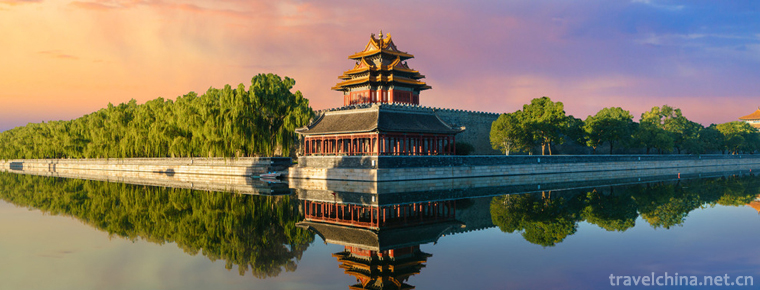
-
Snail rice noodles
Snail jelly powder is a kind of snack rice flour in Liuzhou City, Guangxi Zhuang Autonomous Region. It has the unique flavor of hot, cool, fresh, sour and hot. is the most famous local snack in Liuzho.
Views: 315 Time 2018-11-05 -
Baiyundong Tourist Area Kongshan
Baiyundong in Kongshan Mountain is a national key scenic spot, National Geological Park and national AAAA level scenic spot. Located in Lincheng County of Xingtai City.
Views: 179 Time 2019-01-29 -
Kunlun Mountains
Kunlun Mountain, formerly known as Kunlunqiu, also known as Kunlunxu, is the god mountain in ancient Chinese legend, the ancestor of Wanshan Mountain, the birthplace of Chinese civilization, and the k.
Views: 137 Time 2019-01-29 -
Langyatai Scenic Area
Langyatai Scenic Spot belongs to Qingdao Langyatai Provincial Tourism Resort (established in December 1995 with the approval of Shandong Provincial People's Government with a planned area of 9.8 squar.
Views: 181 Time 2019-01-29 -
Mudan River Side Wall
The Mudanjiang Side Wall was built in the Tang Dynasty, presumably at the junction of Mudanjiang City in Heilongjiang Province and the northeast of Hailin County. .
Views: 286 Time 2019-02-07 -
Eight Diagrams porridge
Bagua porridge is derived from "Chinese recipe for longevity". Its main ingredients are turtle and japonica rice. It is made by boiling with other auxiliary ingredients. It can play a health.
Views: 138 Time 2019-03-27 -
Taoist Music
Taoist music is one of Chinese religious music. Taoist music is an indispensable part of Taoist rituals. It has the characteristics of foiling and rendering religious atmosphere, enhancing believers'y.
Views: 212 Time 2019-04-25 -
Li nationality firewood dance
The firewood dance is one of the representative folk dances of the Li nationality. It is called "Turn Brake" and "Taisha" in the Li dialect. It originated from the funeral custom o.
Views: 214 Time 2019-05-12 -
Liangshan Wushu
Liangshan is the hometown of the heroic stories of the Marsh, the place where the heroes of the Marsh flocked together and opposed oppression and exploitation in past dynasties. At the same time, it i.
Views: 90 Time 2019-05-13 -
Long Drum Dance of Yao Nationality
Chinese Yao folk dance. Popular in Guangdong, Guangxi, Hunan and other provinces where Yao people live together, most of them perform on traditional Yao festivals, harvest celebrations, relocation or .
Views: 208 Time 2019-07-11 -
Western Grand Canyon
Synonyms Western Grand Canyon hot spring generally refers to the Western Grand Canyon.
Views: 83 Time 2020-10-16 -
Neijiang in the period of the Republic of China
The 1911 Revolution ended the rule of Qing Dynasty in Neijiang City. In the 24th year of the Republic of China (1935), Sichuan government was unified, and the districts, cities and counties of Neijiang City were divided into the second (Zizhong, Neijiang, Ziyang, Jianyang,.
Views: 336 Time 2020-12-16
